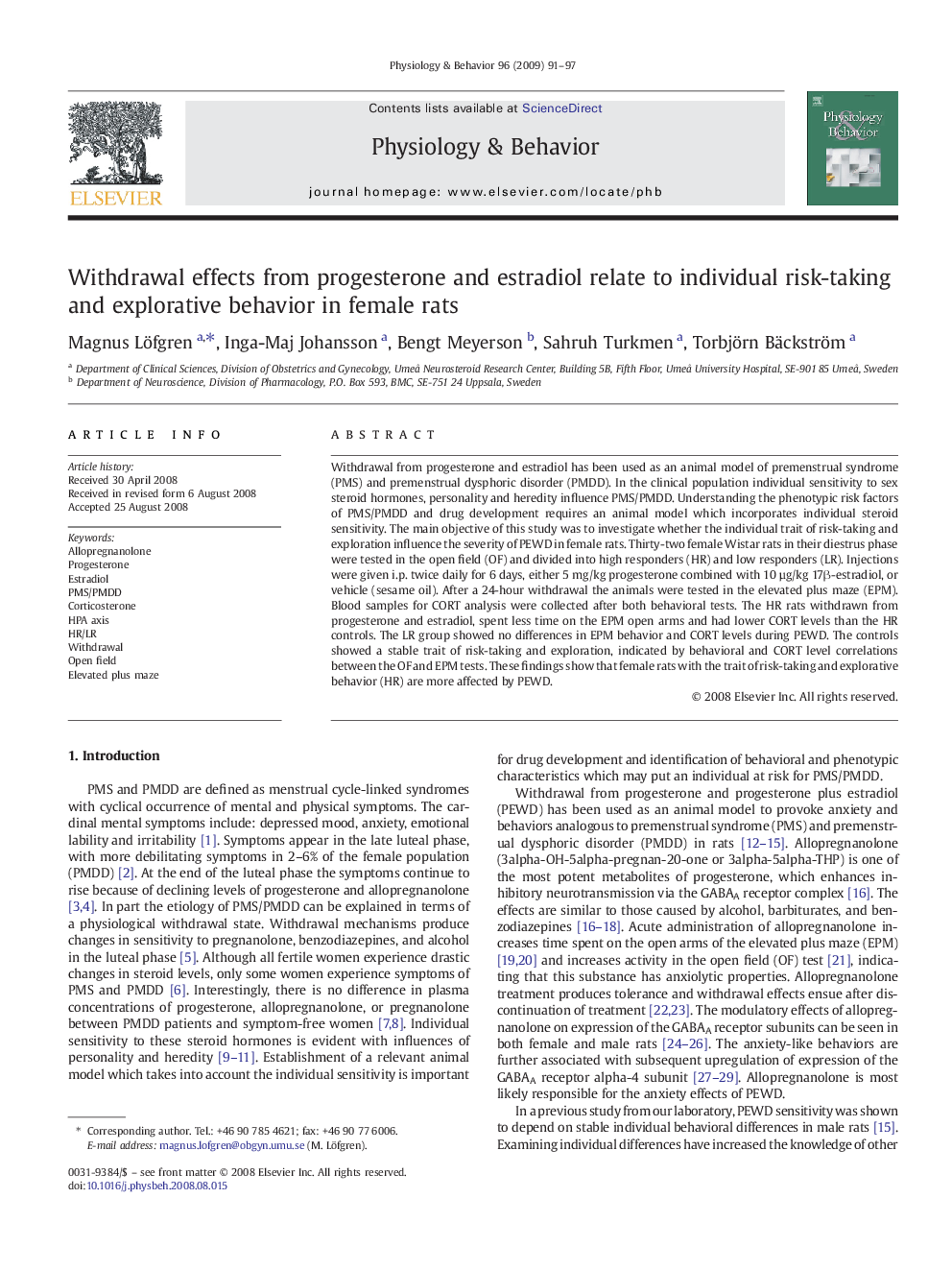| کد مقاله | کد نشریه | سال انتشار | مقاله انگلیسی | نسخه تمام متن |
|---|---|---|---|---|
| 2845846 | 1166402 | 2009 | 7 صفحه PDF | دانلود رایگان |

Withdrawal from progesterone and estradiol has been used as an animal model of premenstrual syndrome (PMS) and premenstrual dysphoric disorder (PMDD). In the clinical population individual sensitivity to sex steroid hormones, personality and heredity influence PMS/PMDD. Understanding the phenotypic risk factors of PMS/PMDD and drug development requires an animal model which incorporates individual steroid sensitivity. The main objective of this study was to investigate whether the individual trait of risk-taking and exploration influence the severity of PEWD in female rats. Thirty-two female Wistar rats in their diestrus phase were tested in the open field (OF) and divided into high responders (HR) and low responders (LR). Injections were given i.p. twice daily for 6 days, either 5 mg/kg progesterone combined with 10 µg/kg 17β-estradiol, or vehicle (sesame oil). After a 24-hour withdrawal the animals were tested in the elevated plus maze (EPM). Blood samples for CORT analysis were collected after both behavioral tests. The HR rats withdrawn from progesterone and estradiol, spent less time on the EPM open arms and had lower CORT levels than the HR controls. The LR group showed no differences in EPM behavior and CORT levels during PEWD. The controls showed a stable trait of risk-taking and exploration, indicated by behavioral and CORT level correlations between the OF and EPM tests. These findings show that female rats with the trait of risk-taking and explorative behavior (HR) are more affected by PEWD.
Journal: Physiology & Behavior - Volume 96, Issue 1, 8 January 2009, Pages 91–97